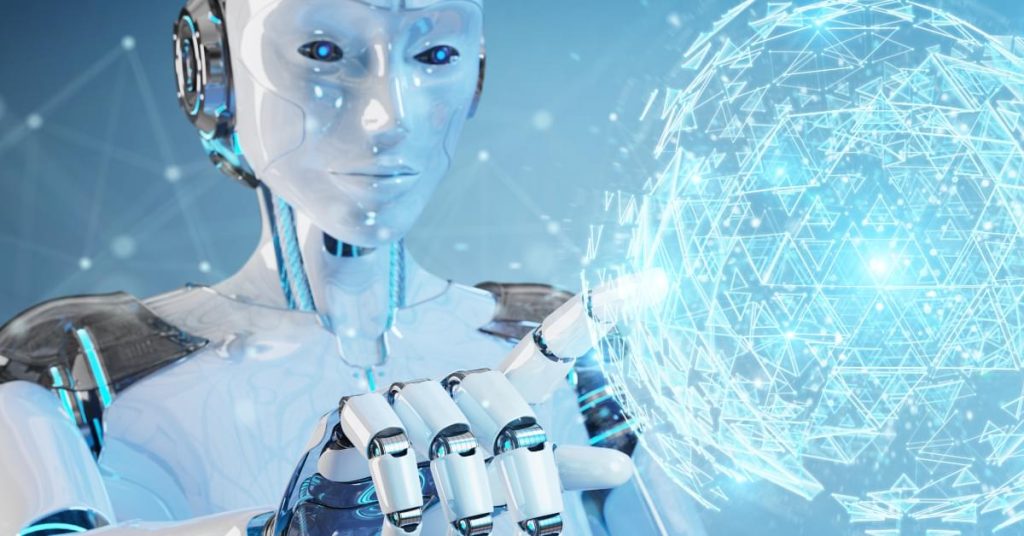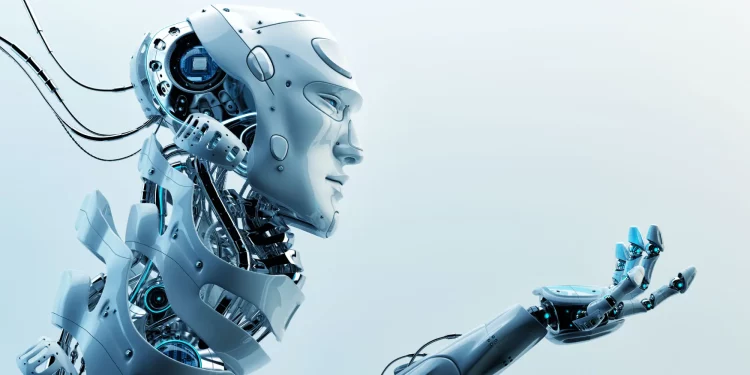Introduction: The Rise of Robot Technology
In the last few decades, robotics has evolved from being a niche technological curiosity to a pivotal force driving significant changes across industries and society. Whether it’s autonomous vehicles, robotic-assisted surgeries, or the automation of industrial production, robots are rapidly transforming the way we live, work, and interact with the world around us. As robot technology becomes increasingly sophisticated, its potential to reshape not only businesses but also entire societies is undeniable.
The global robotics industry is predicted to reach a market value of over a trillion dollars in the coming decades, as automation and artificial intelligence (AI) take center stage in everything from manufacturing to healthcare. However, while robot technology promises enormous benefits, it also poses profound challenges—social, economic, and ethical—that must be addressed. As robots become more integrated into daily life, it is essential to understand how they will influence the structure of society, impact the workforce, and redefine human relationships with machines.
This article explores the role of robot technology in shaping the future, highlighting its potential, examining the risks it poses, and suggesting how society can harness its power for the collective good. We will discuss the ongoing advancements in robotics, the emerging applications, and the societal implications of a future where robots are ubiquitous.
1. The Evolution and Future Potential of Robot Technology
1.1. Historical Context of Robotics
The concept of robots has been around for centuries, with early visions of mechanical beings appearing in ancient myths and stories. However, it was only in the 20th century that robotics began to take form in a practical sense. The first industrial robot, Unimate, was introduced in the 1960s and revolutionized manufacturing by automating repetitive and dangerous tasks. Since then, robotics has advanced exponentially, with innovations in artificial intelligence (AI), machine learning, and autonomous systems making robots more versatile, intelligent, and capable of performing complex tasks.
Today, robots are not only confined to factories; they are becoming an integral part of healthcare, transportation, education, and agriculture, among other sectors. For example, surgical robots are helping doctors perform minimally invasive procedures with greater precision, while autonomous delivery robots are beginning to transform logistics and last-mile delivery services.
1.2. The Role of AI in Advancing Robotics
One of the driving forces behind the rapid development of robot technology is the integration of artificial intelligence (AI). Unlike traditional robots, which followed predefined instructions, robots with AI capabilities can learn from experience, adapt to new environments, and make decisions autonomously. This ability to self-improve makes AI-powered robots suitable for a wide range of applications, including those that require problem-solving, creativity, and critical thinking.
For instance, AI-powered robots can now assist in health diagnostics, predict maintenance needs in industrial systems, and even perform complex assembly tasks that were previously too intricate for robots to manage. The future of AI in robotics holds immense promise, with ongoing research aiming to enhance the cognitive abilities of robots, making them more autonomous and capable of handling tasks in dynamic, real-world environments.
2. The Impact of Robotics on Society
2.1. Revolutionizing the Workforce
As robots take over more tasks traditionally performed by humans, they will have a profound impact on the workforce. Some jobs, especially those that are repetitive and dangerous, may be entirely automated. For example, in manufacturing, robots are already performing assembly, welding, and material handling tasks. In logistics, autonomous robots and drones are reshaping the delivery industry. Even in healthcare, robots are being used for surgery, rehabilitation, and elderly care.
While the automation of low-skill jobs presents challenges, it also opens the door to new types of work. Skilled labor in fields like robotics programming, AI development, data analysis, and robot maintenance will be in high demand. However, this shift will require retraining and upskilling of workers to ensure they can transition into new roles.
Robotics could also have a positive impact on the workforce by reducing human error, improving productivity, and enabling workers to focus on more creative and complex tasks. For instance, in industries such as healthcare and education, robots could support human professionals by performing routine tasks, allowing them to dedicate more time to critical thinking and problem-solving.
2.2. The Changing Landscape of Education and Skill Development
As robots become more integrated into society, the demand for skills in STEM (Science, Technology, Engineering, and Mathematics) fields will rise. Education systems around the world will need to adapt by integrating robotics and AI education into their curricula from an early age. The goal will be to equip the next generation with the skills necessary to thrive in a robot-centric world.
Programs focused on robotic engineering, machine learning, and AI ethics will be essential to developing a workforce capable of working alongside robots. Additionally, there will be a growing emphasis on soft skills, such as creativity, collaboration, and problem-solving, that complement the capabilities of robots.
2.3. Ethical and Social Implications of Robots
With the increasing presence of robots in our daily lives, ethical concerns will inevitably arise. One of the most pressing issues is how robots make decisions. Autonomous robots, especially those powered by AI, may be tasked with making critical decisions in areas such as healthcare, military operations, and public safety. The ethical implications of such decisions—especially when it comes to life-and-death situations—are profound.
There are also concerns about privacy and security. As robots collect and process vast amounts of data, including personal and sensitive information, there must be clear regulations governing how this data is used and protected. Data breaches, cybersecurity threats, and the potential for surveillance could pose significant risks to individuals and society.
Another issue is the impact of robots on inequality. If robots are deployed in ways that are accessible only to certain populations, regions, or industries, there is a risk that social and economic inequalities could be exacerbated. Ensuring equitable access to robot technologies will be essential for preventing the widening of the digital divide.

3. Transforming Industries with Robots
3.1. Robotics in Healthcare
Healthcare is one of the sectors poised to benefit most from robot technology. From surgical robots that assist surgeons in performing precise operations to rehabilitation robots that help patients recover from injuries, robots are revolutionizing how healthcare is delivered. Additionally, robots are already being used for elderly care and patient monitoring, improving quality of life for people who require ongoing care.
The integration of robots into healthcare allows for more efficient use of resources and better patient outcomes. Robots can perform repetitive tasks, reducing the workload of healthcare professionals and allowing them to focus on more complex, human-centered aspects of care.
3.2. Robotics in Manufacturing and Logistics
The manufacturing industry has been at the forefront of robot adoption. Robots are used to assemble products, package items, and inspect quality, significantly increasing efficiency. This has led to higher productivity, lower costs, and the ability to meet growing demand more effectively.
The logistics industry has also been transformed by robots, with autonomous delivery drones and robotic warehouses becoming increasingly common. These robots improve the speed and accuracy of deliveries while reducing operational costs.
3.3. Robotics in Agriculture
Robotics is helping to address global challenges in agriculture, such as food security and resource management. Robots can automate tasks such as planting, harvesting, and monitoring crop health, making agriculture more efficient and sustainable. Precision farming techniques, powered by robots, are allowing farmers to optimize resource use, reduce waste, and increase crop yields.
4. Policy and Regulation: Ensuring a Positive Future for Robotics
As robots become an integral part of society, it is essential for governments, businesses, and civil society to work together to ensure that robotics benefits humanity. Effective policy and regulation will be key in shaping the future of robot technology. Some areas that will require careful consideration include:
4.1. Regulation of Autonomous Systems
Governments will need to create clear guidelines and laws to regulate the development and deployment of autonomous robots. These regulations should address issues like safety, liability, and accountability for autonomous decision-making.
4.2. Promoting Equal Access
It is important to ensure that the benefits of robot technology are accessible to all populations, regardless of socioeconomic status, geographic location, or educational background. Public investments in robot technology and education can help reduce the digital divide and ensure equitable access.
4.3. Ethical Guidelines for AI and Robotics
Developing ethical frameworks for AI and robotics is essential for ensuring that robots are used in ways that align with human values and rights. This includes addressing issues such as privacy, fairness, transparency, and accountability in AI systems.
Conclusion: A Future Shaped by Robots
Robot technology has the potential to dramatically transform every aspect of our society, from work and education to healthcare and transportation. As these technologies evolve, they will offer new opportunities for economic growth, productivity, and improved quality of life. However, they also raise important questions about ethics, equity, and the future of work.
To harness the full potential of robotics, society must ensure that these technologies are developed and implemented in ways that promote social good. With careful planning, regulation, and investment, robots can become powerful tools for creating a more efficient, sustainable, and inclusive future.
As we look ahead, it is clear that robots will play an increasingly central role in shaping the future of society. The challenge lies in ensuring that the benefits of robot technology are shared by all, rather than concentrated in the hands of a few. The future is unfolding, and robots will undoubtedly be one of the key forces driving that change.











































